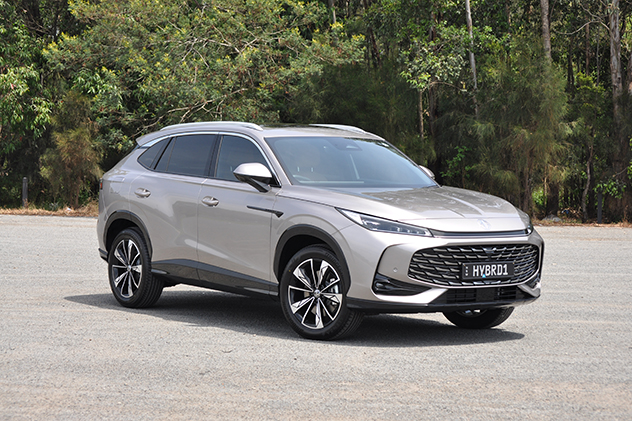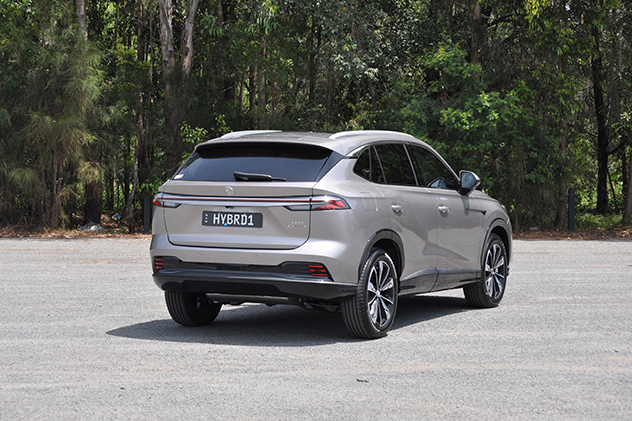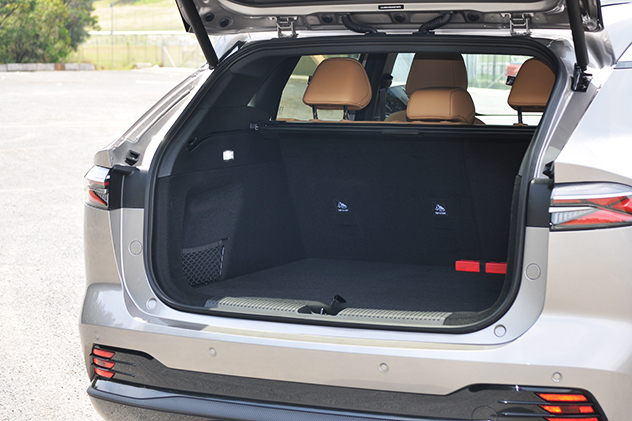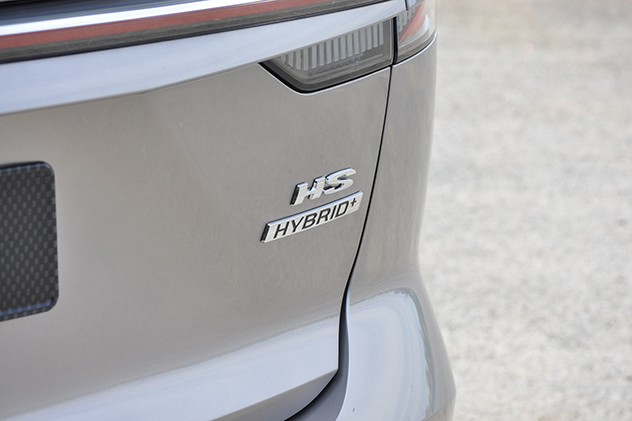
— Kris Ashton
While MG has come a long way since its rebirth as a budget Chinese marque in 2007, some vehicles in its current model lineup still speak to this heritage.
The MG3 Hybrid+, for example, came a poor last in an Open Road comparison test due to its substandard powertrain and questionable interior fit-out (the latter a criticism we also directed at the MGU9 ute).
The new MG HS Hybrid+ is the opposite: it showcases the best MG is capable of in 2025, delivering a smooth powertrain and attractive styling while retaining excellent value for money. Could it be a Toyota RAV4 killer?
The MG HS Hybrid+ range consists of just two models: the Excite for $40,990 and the Essence for $44,990 (both drive-away prices).
In size and drivetrain, the Hybrid+ most closely resembles the Toyota RAV4 2WD Hybrid, which retails for $51,410 before on-roads. Among numerous other competitors are the Honda CR-V e:HEV ($59,900), Hyundai Tucson Elite Hybrid ($48,350), and Haval H6GT Ultra ($44,990).
Aside from being one of the cheapest mid-sized hybrid SUVs on the market, the MG HS Hybrid+ is backed by an industry-leading 10-year/250,000km warranty provided it is serviced at an MG dealership.
Some of the coarseness and unfinished feel we criticised in our review of the MG HS Super Hybrid (which in fairness was a pre-production Excite model) has been rectified in the Hybrid+.
Unlike the recently released MGU9 ute, it presents well and suggests a heightened attention to detail and build quality, as the newer crop of MG SUVs have tended to.
The polyurethane steering wheel does a decent job of resembling – if not feeling – like leather, and our Essence test vehicle was clad in soft but likely hard-wearing caramel-coloured PVC.
A panoramic screen stretches across half the dashboard’s length and houses a generous driver information unit with a large digital speedo. The interior has a satisfying sense of cohesiveness, with complimentary lines and plenty of light and space. Improved sound deadening adds a measure of luxury to the cabin.
Up front are two USB-C ports, two drink holders, and (in the Essence) a handily positioned wireless phone charger – although it isn’t ventilated, which can be an issue in an Aussie summer. Move to the second row and one finds loads of leg, head and foot room around comfy, well-shaped seats, along with air vents and two USB-C ports. The Essence also gets a fold-down armrest with drink holders. The Hybrid+ has family needs covered with two Isofix and three top-tether child restraint attachments.
Boot volume is 507 litres with the rear seats up and 1484 with them folded down – spacious but not class-leading for the segment and slightly smaller than the RAV4’s. The second row doesn’t slide, either, so what you see is what you get for cargo space.
The sunroof in the Essence stretches almost the entire length of the cabin, although the shade feels a touch flimsy – one of the few accessions to budget evident in the Hybrid+ Essence.
The Excite model’s scarcely believable drive-away price becomes more believable upon examining its standard features list.
It does get 19-inch alloy wheels, automatic LED headlights and taillights, keyless entry and start, a 12.3-inch driver display and 12.3-inch infotainment touchscreen, Apple CarPlay and Android Auto connection, six-speaker audio, air conditioning with rear vents, an endless list of active and passive safety equipment, and a leather-look polyurethane steering wheel. But it also makes do with cloth upholstery, no front fog lights, no sunglasses box, and a host of nice-to-haves that appear on the Essence.
Among these are an electrically operated panoramic sunroof, dual-zone climate control, electrically folding door mirrors with memory, front parking sensors, PVC seat upholstery, lumbar adjustment and three memory settings for the driver’s seat, an electrically adjustable passenger’s seat, heated front seats, a powered tailgate with kick function, eight-speaker audio, a 360-degree camera and a wireless phone charger.
Both models come with a space saver spare tyre.
While the Hybrid+ has not been ANCAP crash-tested, all petrol variants of the MG HS achieved a five-star ANCAP rating in 2024. They scored 90 per cent for adult occupant protection, and 87 per cent for child occupant protection.
The Hybrid+ is fitted with every safety acronym and initialism yet conceived, although this does mean it comes with ANCAP-mandated speed alert bing-bongs (and, oh goody, an all-new chime for the lane-departure warning). You can program a shortcut into the infotainment system that lets you turn everything on/off per your preference with a couple of button presses, but this must be activated again every time the car is switched off.
Under the bonnet is a parallel hybrid system consisting of a 1.5-litre turbocharged four-cylinder engine (105kW and 230Nm) and electric motor (146kW and 340Nm). In tandem they produce 165kW and 340Nm.
A dedicated hybrid transmission switches between drive sources and the Hybrid+ has a three-level energy recovery system that charges a 1.83kWh battery. The Hybrid+ does not have an EV-only mode, although the electric motor provides much of its drive at low speeds.
Claimed fuel consumption is 5.2L/100km, dropping to just 4.2L/100km in an urban setting. The Hybrid+ requires 95RON unleaded petrol.







A physical button on the doorhandle locks and unlocks the car – low-tech compared to the sensor-operated function on many newer vehicles, but no less practical. It does take a couple of seconds to lock after the button is pressed, however, which can be disconcerting at first. Those of a huskier frame will appreciate the driver’s seat in the Essence, which slides back when the ignition is turned off to allow easier ingress and egress.
The commonsense layout of controls and instruments makes the driver feel immediately at home, with the gear shifter and park button setup as good an ergonomic arrangement as we’ve encountered. Vision all around is excellent and the 360-degree camera display on the Essence provides sharp images.
Many of the technological irks in the pre-production Super Hybrid have been ironed out, too, although access to functions such as recirculated air and audio volume does require delving into the touchscreen (which isn’t the fastest to react to inputs, either). A sensibly laid out home screen, with commonly used features available at a glance, aids usability.
Unlike the dreadful hybrid system in the MG3, the interplay between electric motor and combustion engine in the Hybrid+ is just about seamless and offers plenty of go off the line or while rolling on the highway. With no operational quirks or alarming shortfalls in power, 165kW/340Nm provides more than adequate performance for the daily commute. During our time with the Hybrid+, its fuel consumption meter showed an average of 5.5L/100km, which is right on the mark for a mid-sized hybrid SUV and pretty close to its claimed figures.
Cornering in the Hybrid+ isn’t what you’d call precise, especially if you take any speed into a tight bend and the vehicle’s 2100kg GVM comes into play, but in general handling is competent, consistent, and more than satisfactory for suburban duties or a holiday road trip.
Ride from the Macpherson struts (front) and multilink suspension (rear) setup is a mixed bag (as we’ve come to expect from MG), absorbing larger bumps with aplomb but tending to fidget when confronted with smaller imperfections and potholes.
Unlike the MG HS Super Hybrid, which felt overpriced and undercooked, the Hybrid+ offers plenty for the money.
Anyone who wants an economical car but can’t be bothered with the palaver of a plug-in hybrid will find the Hybrid+ makes a convincing case indeed, packing in everything mid-sized SUV buyers look for while doing little to cause offence. A starting price $10,000 less than a comparable Toyota RAV4 is the icing on the cake.